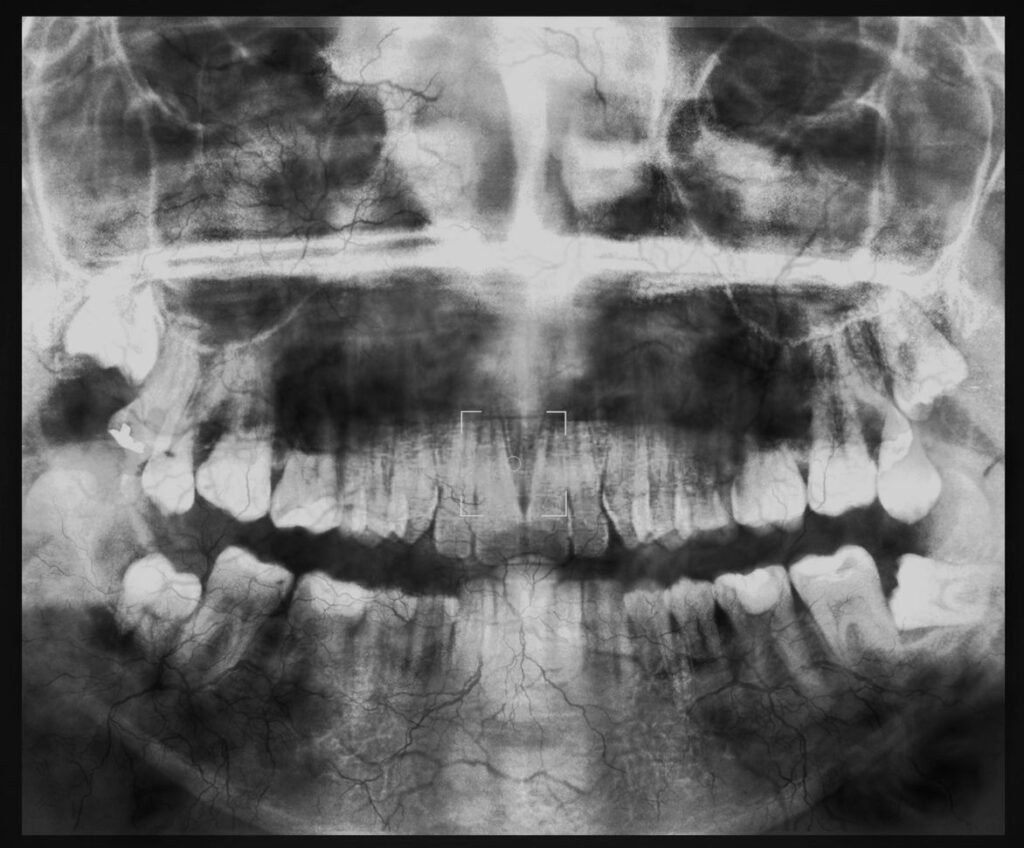Click to call
Jaw Pain

Have you ever had moments when savoring your favorite meal becomes a challenge, or simple conversations become uncomfortable because of jaw pain? We get it, and we’re here to help. At Brace Dental Clinic, we understand how jaw pain can affect your daily life, and our goal is to make your smile brighter by providing solutions that work for you.
Jaw discomfort can be caused by various factors, such as temporomandibular joint disorder (TMD), teeth grinding, dental issues, accidents, arthritis, and even stress. You might notice persistent discomfort in your jaw or muscles, strange clicking or popping sounds, or experience headaches and earaches. We want you to know that ignoring these signs can make things worse and lead to more complex problems.
Because they are soft, gentle, and made to fit over an adult’s finger, finger toothbrushes are a useful item for babies and kids because they make it simpler for parents or childcare providers to brush the child’s teeth and gums.
Causes of Jaw Pain:

1. The Silent Intruder: Infections
- Hidden oral infections, like dental abscesses, can crash your jaw’s peace party. Swift dental attention is the superhero it needs.
2. Dental Dilemmas: It’s Not Just About Teeth
- Misaligned teeth, cavities, or gum troubles can throw a wrench into your smile’s gears, resulting in jaw pain. Regular dental checkups are your secret weapon.
3. Arthritis: A Guest You Didn’t Invite
- Arthritis can crash the party and cause inflammation and discomfort in your jaw. But don’t worry; we’ve got strategies to kick it out.
4. The Sneaky Culprit: Temporomandibular Joint Disorder (TMD)
- Meet the TMD, your jaw’s mischievous antagonist. It can make your jaw feel like it’s hosting a never-ending party, complete with those annoying clicking or popping sounds.
5. Stress – The Silent Agitator
- Stress and anxiety can sneakily lead to teeth clenching or grinding, resulting in jaw pain. Let’s show stress the exit door together.

6. The Nighttime Grind: Teeth Grinding (Bruxism)
- Ever wondered why your teeth sometimes feel like they’ve been in a boxing match? It’s probably due to teeth grinding, a nighttime habit that can lead to jaw pain and those stubborn headaches.
7. Medication Plot Twists
- Some medications can be like plot twists you never saw coming, leading to jaw discomfort. Our team can help you navigate this storyline.
8. Structural Surprises
- Sometimes, your jaw might have a few structural quirks. We’re the detectives who love solving these mysteries.
9. The Unwanted Surprise: Trauma or Injury
- Accidents and unexpected blows to the face can introduce your jaw to a world of pain. When life hits you hard, we’re here to help you bounce back.
10. Neurological Riddles
- Rare but possible, certain neurological conditions can cause atypical facial pain and jaw discomfort. We’re ready to tackle even the most cryptic cases.
Symptoms:

Persistent Jaw Discomfort: Your jaw may feel persistently uncomfortable, casting a shadow over your everyday activities.
Limited Jaw Mobility: You might find that your jaw’s range of motion is reduced, making it a challenge to talk, eat, or even yawn.
Clicking or Popping Sounds: Occasionally, your jaw may surprise you with peculiar sounds like clicks or pops as you open and close your mouth, as though it’s telling a secret.
Neck and Shoulder Pain: Jaw pain’s influence can extend beyond the jaw, causing discomfort in your neck and shoulders and adding an extra layer of unease.
Headaches: Frequent headaches may accompany jaw pain, often radiating from the jaw area and causing unwelcome distress.
Earaches: The discomfort can be a silent contributor to earaches, with the pain seemingly emanating from a different source.
Diagnosis

Patient History: Your journey to relief begins with a chat. We’ll discuss your symptoms, when they started, and any relevant details about your medical and dental history. Your story is our first clue.
Physical Examination: Our skilled team will conduct a thorough examination, feeling the jaw joint, muscles, and areas surrounding your jaw for signs of tenderness, clicking, or muscle tension. This is where we gather important evidence.
Imaging: To get a closer look, we may order imaging tests such as X-rays or CT scans. These images reveal the inner workings of your jaw, highlighting any structural issues or abnormalities. Think of it as our magnifying glass.
Dental Impressions: In some cases, dental impressions may be needed to create a detailed model of your teeth. This can help us understand how your bite aligns and if misalignment is contributing to your discomfort.
Treatment:

- Unlock the Power of Self-Care: Picture making simple tweaks in your daily routine that lead to substantial changes. We’re talking dietary adjustments, stress management techniques, and muscle-relaxing exercises. Small changes can have a big impact.
- Discover Your Smile’s True Potential: Dental issues can be like roadblocks on your journey to comfort. With orthodontic treatments, dental appliances, and restorative procedures, we can help you pave the way to a pain-free smile.
- Relief in a Pill: Sometimes, all it takes is a well-chosen medication to unlock relief. We have an arsenal of pain relievers, muscle relaxants, and anti-inflammatory drugs that can provide that much-needed respite.
- The Magic of Physical Therapy: Envision skilled physical therapists guiding you through exercises and techniques to enhance your jaw muscle strength, mobility, and overall comfort. It’s a hands-on approach to your well-being.
- Surgical Transformation: In challenging situations, surgery might be your ticket to lasting relief. Imagine procedures that repair damaged tissues, adjust your jaw’s structure, or target specific contributors to your pain.
